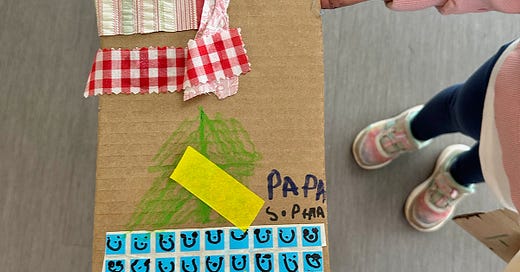Sharing power and control with children.
Our flexibility invites their discovery, but it does take practice.
It’s easy to slip into control mode in the studio or classroom. We put a lot of work into carefully setting up an experience, and we don’t want it to go to waste. We want children to stay on task, do it "right," or follow the plan. But creativity doesn’t work that way, and neither does deep learning. The truth is, the more we let go, the more we notice: the sparks, the questions, the flow. We repeat this mantra to ourselves all the time: children know just what to do when it comes to open-ended art and play. But this takes much practice and we need to shift our perspectives about power and control that have been engrained since our own childhoods—that grownups are always the teachers, that sharing power and control is a dangerous and slippery slope when it comes to classroom management, and that if we don’t instruct, they can’t do it. That’s a lot! But the good news is that you can start small.
One of our partner teachers facilitated step-by-step collage snowmen related to a picture book with her Kindergarteners for over 30 years. Every snowman looked exactly alike, and she liked it this way. She was always praised for the neat rows of student work, and she was not sure how to let go or try a different way. After working with us for several years, this veteran educator bravely tested the concept of choice with the snowman craft, offering bowls of rhinestones and cotton balls and shells, and other little bits and white circles of varying sizes. She never looked back. The children described their work elaborately and with pride. They told stories about their snowmen. The snowman craft didn’t go away, it was just reimagined with the children at the front. For the other 30 years, this activity was just a blip on the radar and kind of a slog for both child and teacher. Now, it is a real opportunity for learning.
Below are four mindset shifts that help you practice sharing power and control and why it matters. Each one includes a practical tip you can try in the classroom or studio tomorrow.
Keep reading with a 7-day free trial
Subscribe to Art is Play to keep reading this post and get 7 days of free access to the full post archives.



